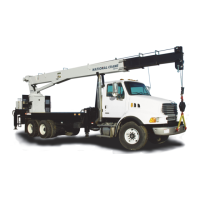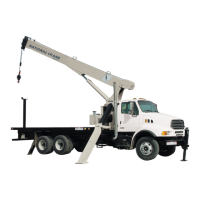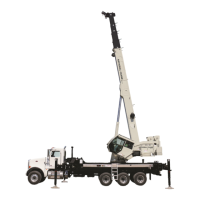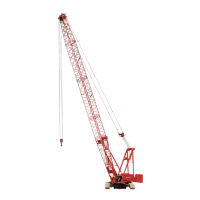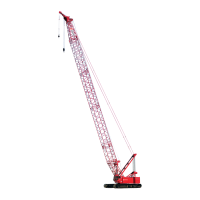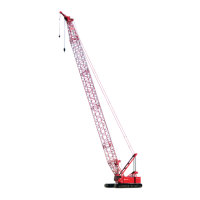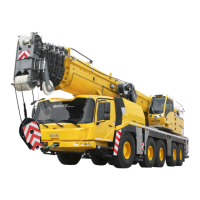National Crane Published 10-30-2014 Control # 040-09 2-13
1400H OPERATOR AND SERVICE MANUAL OPERATING CONTROLS
Variation in chassis, outrigger and mounting
configurations will cause outrigger foot loading to differ on
each crane, however, outrigger foot loads can be as high as
70,000 lb (31 750 kg) [156 psi (1,07 MPa) on standard
outrigger pads]. Support surface bearing capacities vary by a
large amount-from 833 psi (5,7 MPa) on bed rock down to 14
psi (0,1 MPa) on soft clay. Loose sand or soft asphalt will
support even less load. It is imperative that the operator take
proper precautions to insure the outrigger foot has adequate
cribbing for existing soil conditions.
If specific outrigger foot loading is required for an
individual crane, contact National Crane with actual chassis
weights and crane details.
1. When Lifting Over the Rear of the Truck
Inspect oil level gauge and contaminated oil filter gauge
with oil at operating temperature and boom and
outriggers stowed. Add oil if low, change filters if gauge
indicates dirty.
Remove outrigger pads from their carrying brackets and
install them on the outrigger legs. Be sure they are
properly secured in place.
Extend the two main outrigger beams to either the mid
span or full span width as indicated by the decals on the
beams and lower the stabilizer legs until the front truck
tires clear the ground. Level the truck from side to side
while observing the level indicator at either control
station. If using mid span outrigger, engage manual mid
span over-center locks. Then extend and lower the
stabilizers to level the crane front-to-back. Again refer to
the level indicator to insure that the crane is properly
leveled. Always keep the load as close to the ground as
possible.
2. When Lifting Over the Front of the Truck and the Vehicle
is Equipped with a Front Jack
A front jack is required when loads are to be lifted over
the front of the vehicle. (Except with a Rear Mount
Configuration). Inspect oil level gauge and contaminated
oil filter gauge with oil at operating temperature and
boom and outriggers stowed. Add oil if low, change
filters if gauge indicates dirty.
Remove outrigger pads from their carrying brackets and
install them on the outrigger legs. Be sure they are
properly secured in place. Extend the two main outrigger
beams to either the mid span or full span width as
indicated by the decals on the beams and lower the
stabilizer legs until the front truck tires clear the ground.
Level the truck from side to side while observing the
level indicator at either control station. If using mid span
outrigger, engage manual mid span over-center locks.
Then extend and lower the rear stabilizers to level the
crane front-to-back. Again refer to the level indicator to
insure that the crane is properly leveled. After the crane
is leveled side-to-side and front-to-back, extend the front
jack until firm contact is made with the ground. Always
keep the load as close to the ground as possible.
Rear stabilizers must be fully extended for both full
and mid span outrigger operation.
Do not operate outrigger beams or legs unless they
are visible to either the operator or a designated signal
person to avoid crushing injury.
3. Check to ensure that the jib, if so equipped, is stowed
correctly on the first section boom.
DANGER
!
DANGER
!
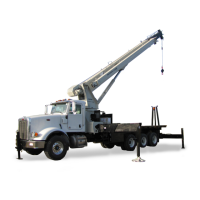
